Volkswagen has teased the look of what's soon to become its smallest and cheapest electric car - and it's due to arrive within two years and with a very affordable asking price.
The ID.Every1 concept has just been unveiled as the preview to the forthcoming ID.1 - the German giant's electrified spiritual successor to compact cars from its past, like the Up, Fox and Lupo.
It is set to launch in 2027 in the hope it will stimulate demand for its EVs as the car giant struggles in the current market.
Volkswagen is currently in the process of dramatically slashing production at its dedicated electric car-only factory in Germany in the wake of declining sales, and the threat of plant closures and job losses still looms.
It means much hinges on the auto firm's new models arriving before the end of the decade.
Bosses have promised nine new EVs to transform its line-up, with the ID.1 seen as the 'last piece of the puzzle'.
And it will be the least expensive piece too, with the car maker stating it will come with a starting price of 'around €20,000', which translates to £16,750. If it arrived now, it would be Britain's third cheapest EV.
VW has likened its impact on the market to the iconic Beetle, saying it will 'enable affordable mobility for millions of people with compact and likeable cars'.
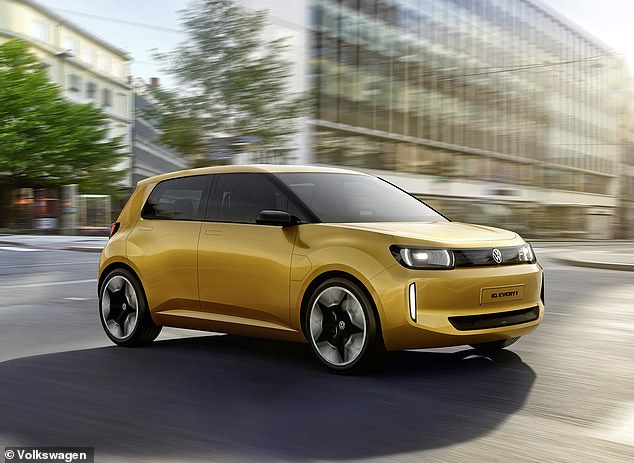
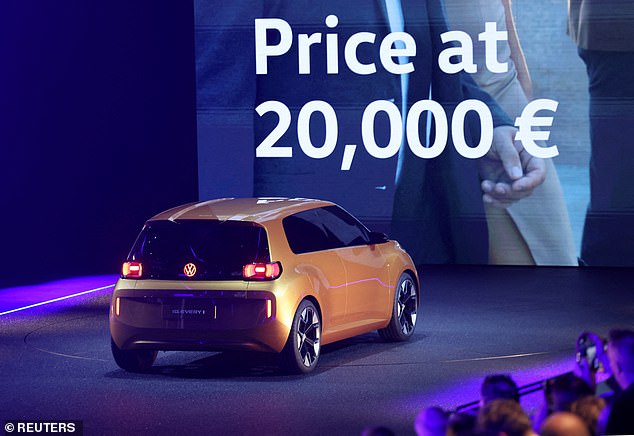
VW ID.1: What we know so far...
The ID.Every1 concept, revealed in Dusseldorf on Wednesday evening, can be considered an early look at how the production version will appear.
Bosses say the design is very close to the real deal, with customers likely to see something slightly toned down with smaller wheels, proper door handles and revised light clusters front and back.
It will also see VW's long-awaited return to the smallest 'A' segment following a three-year hiatus after it culled the Up city car at the end of 2023 .
By the time it arrives, it will sit below the Polo-sized ID.2 in Volkswagen's vehicle line-up, with the bigger electrified supermini expected for release in 2026 - and likely unveiled this year.
While the brand will also update its existing ID.3, ID.4 and ID.5, launch a GTI hot-hatch variant of the ID.2 and add three more models to its electric family of cars, the ID.1 is arguably its biggest challenge of all.
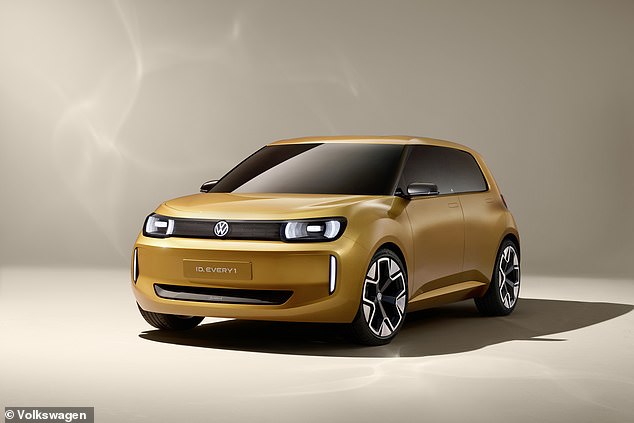
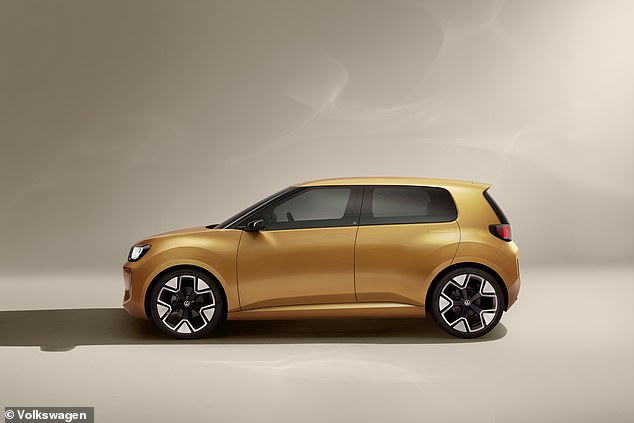
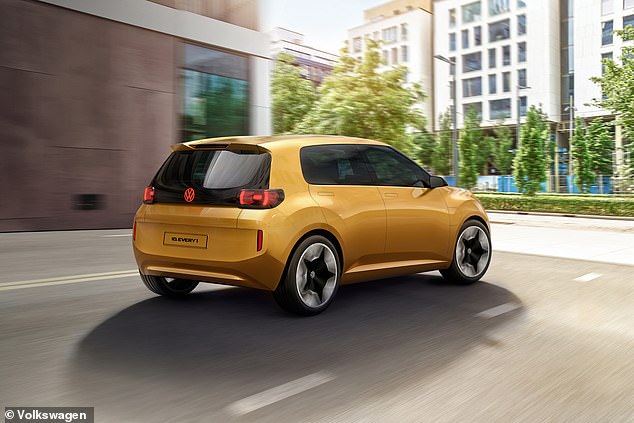
At just 3,880mm long in concept form, the ID.1 is set to be just 280mm longer than the diminutive Up that it will effectively replace.
Volkswagen will need to fit a suitably sized battery into the platform that offers adequate range for customers but is also cost efficient to ensure it can meet its €20,000 promise.
The concept, fitted with a 94bhp electric motor and riding on large 19-inch wheels, has a top speed of just 130kmh, which is a just shy of 81mph.
The most important figure of all is the range, which is claimed to be 155 miles.
While this is short of what's offered from the cheapest EV in Britain, the £15,995 Dacia Spring with 140 miles, it's unclear if these figures will be accurate for the production ID.1, which ultimately will have smaller wheels and the latest drivetrain tech when it emerges in 2027.
The Citroen e-C3, which costs from £21,990 today, has a 199-mile range between battery charges, for further reference.
Volkswagen also hasn't released details about the size of the battery in the ID.Every1, though we expect the showroom version to be between 35 and 40kWh.
Its previous electric e-Up, available from 2011 to 2023, had a 36.8kWh battery providing a claimed range of 161 miles.
Commenting at the unveiling of the concept car, Thomas Schäfer, VW's CEO, said: 'The ID. Every1 represents the last piece of the puzzle on our way to the widest model selection in the volume segment.
'We will then offer every customer the right car with the right drive system – including affordable all-electric entry-level mobility.'
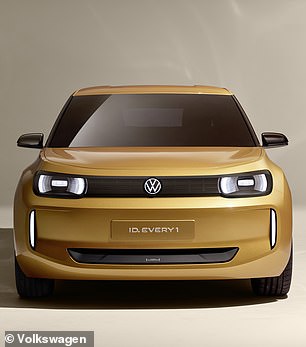
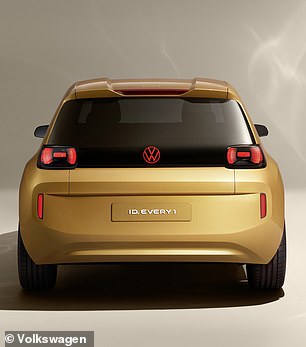
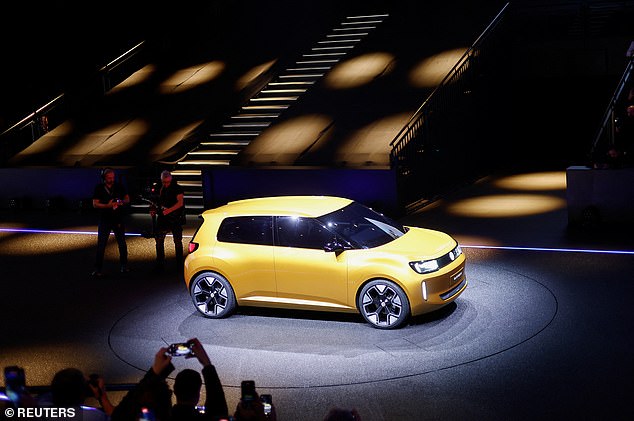
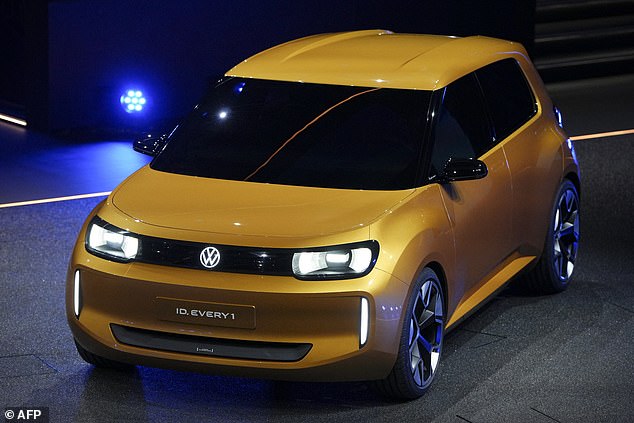
A 'friendly' design
The car's boxy and chunky design is very much in-line with the Up and Lupo and is intended to keep the vehicle looking timeless.
Like these small models from its past, the front of the car will be simple, with a chunky black grille flanked by single headlamps.
The upturned corners of the bumpers, both front and back, are purposely shaped to look like a smile and when combined with the light clusters - especially the pupil-like headlights - are meant to resemble a happy face.
The VW emblems at the front and rear are illuminated using LEDs; additionally, the one at the back serves as an efficient third brake light.
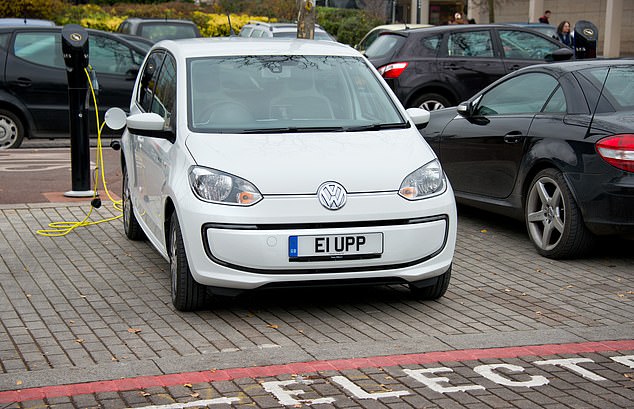
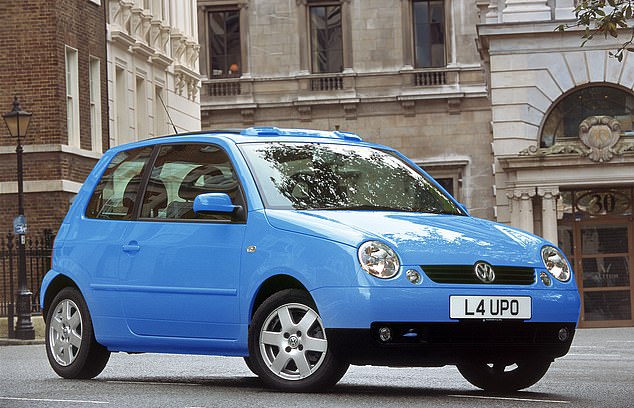
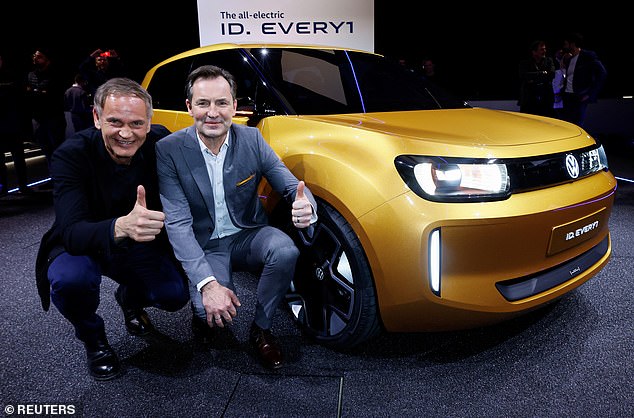
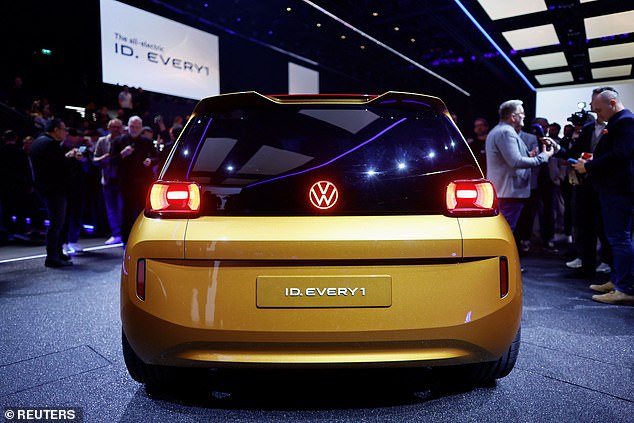
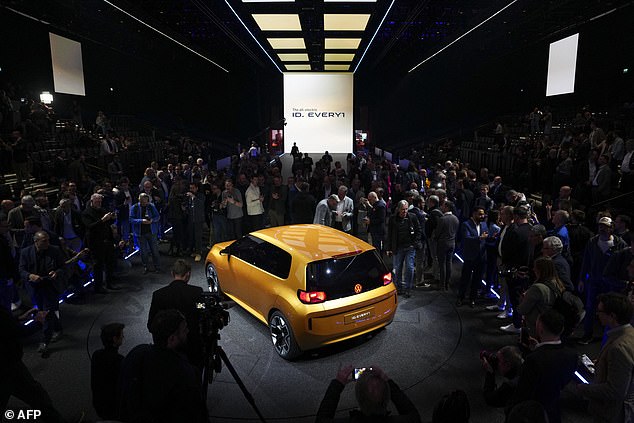
Andreas Mindt, Volkswagen’s design chief, stated: "We aimed to produce something daring but still approachable."
The ID. Everyone appears confidently stylish yet approachable – owing to features like the dynamic headlights and the 'welcoming' taillights.
These design features transform it into something more than merely a vehicle; they bestow upon it personality and a distinctive presence that resonates with individuals.
Inside, the cabin is straightforward yet smartly employs contrasting materials and colors to create an impression of greater depth rather than spaciousness.
The dashboard features a slim digital instrument cluster designed in a letterbox style, which is interrupted by a sizable, horizontally-oriented infotainment display resembling the thinnest tablet recently released by a renowned U.S. technology firm.
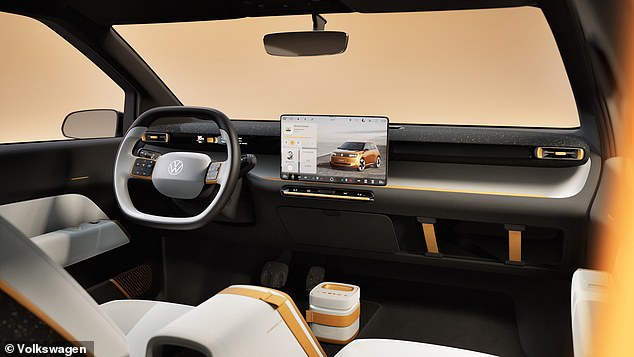
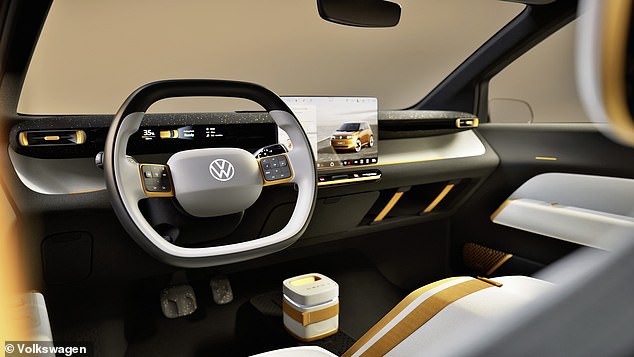
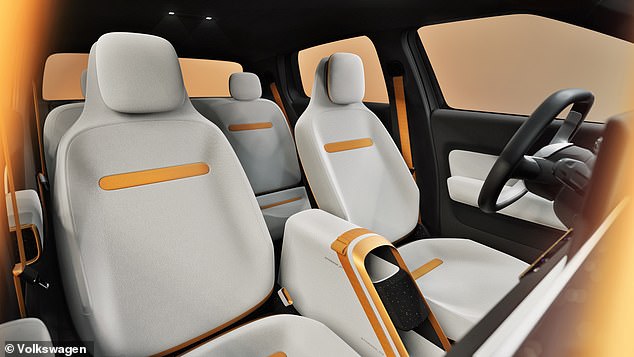
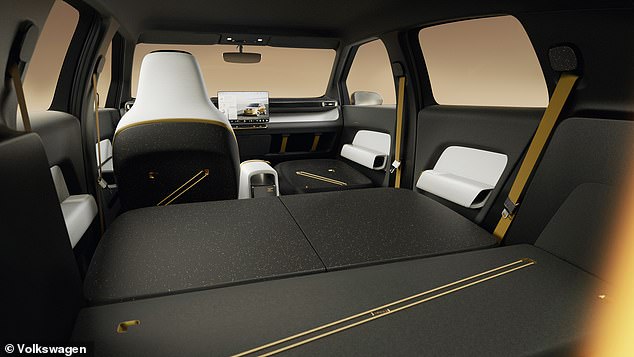
Volkswagen is also pledging that the ID.1 will come equipped with entirely new software-driven electronics architecture, which greatly relies on over-the-air updates.
The objective is to ensure that the technology remains current in their new models compared to those of other competitors.
The sizable tablet-style display is positioned atop a limited array of buttons designed for adjusting temperature controls, audio levels, and seat heating functions. This setup will surely please those who have found themselves frustrated by complicated entertainment systems in many modern vehicles when trying to modify these settings.
Extending the design motif from the outside to inside, the dashboard features a set of air vents positioned at each corner, mirroring the style of the headlights.
All the driving controls are attached to the steering wheel, leaving the lower section of the dash free for a small box-like cubby bin.
Above this is a centrally-mounted glovebox, while the vacant compartment in the area in front of the passenger seat is now an open storage bins with straps.
VW says its compact dimensions will still be suitable to space up to four occupants inside, while the boot capacity of the concept is 305 litres - that's 50 litres more than the Up provided.
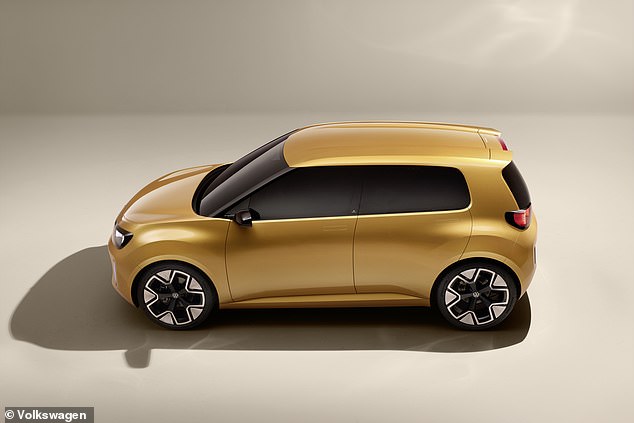
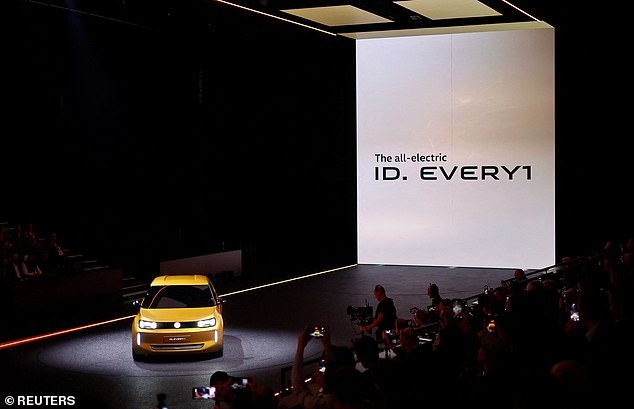
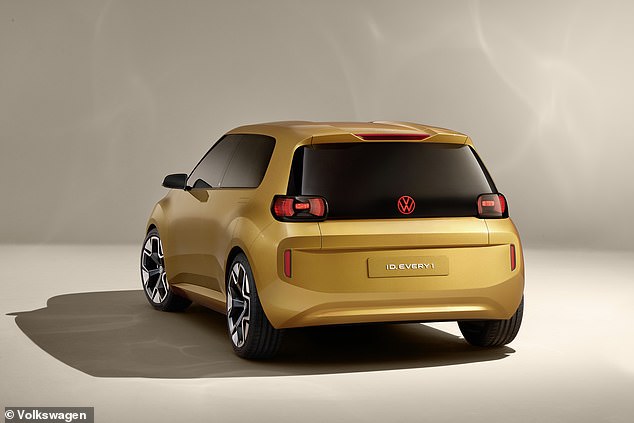
Can VW make the ID.1 profitable?
Speaking at the concept's debut in on Wednesday evening, Schaefer told the audience: 'Our goal is to be the world’s technologically leading high-volume manufacturer by 2030.
'And as a brand for everyone – just as you would expect from Volkswagen.'
However, with a starting price of around £17,000, VW is going to be hard-pressed to make the ID.1 a profitable model.
While car makers have been widely criticised for not providing customers with smaller, cheaper EVs, manufacturers have rightfully argued that the high cost of battery tech means it is almost impossible to make money from an affordable compact electric vehicle.
With the promised low price, there will be questions raised about profit margins available with ID.1 without a significant drop in battery costs.
Gartner, a US market research firm, last year published a report predicted that the price of a new electric car will drop to the same level as an equivalent new petrol or diesel model 'much faster than initially expected,' saying drivers will see price parity by 2027.
It was asserted that innovative manufacturing techniques will drive down production expenses so they fall beneath those of a similar vehicle equipped with an internal combustion engine over the coming three years.
The construction expenses are expected to decrease much more rapidly compared to battery costs, according to the March 2024 report. Batteries represent the highest expense component of electric vehicles, constituting approximately 40 percent of the total vehicle cost.
Like all other electric vehicle manufacturers, Volkswagen will be hoping this proves true.
Volkswagen's specialist electric vehicle plant in Zwickau is presently undergoing a significant cost-reduction initiative.
The production output from vehicles at the facility is scheduled to be reduced following an recent accord reached with Europe's biggest automobile manufacturer and its works council along with the union IG Metall.
The agreement reached in December removed the risk of factory shutdowns and layoffs until 2030, under the condition that production output would be reduced by half.
Arno Antlitz, the chief financial officer of VW Group, informed staff members in January that moving forward, investments would only target "competitive facilities." He added that this approach applies to all locations, including Germany.
At the end of February, VW Group closed Audi's EV factory in Brussels where it made larger electric SUV vehicles.
Earlier this month it was announced that around Up to 6,000 individuals might lose their employment at Skoda. , which also plans to implement significant reductions to stay competitive amid a costly electric vehicle launch.